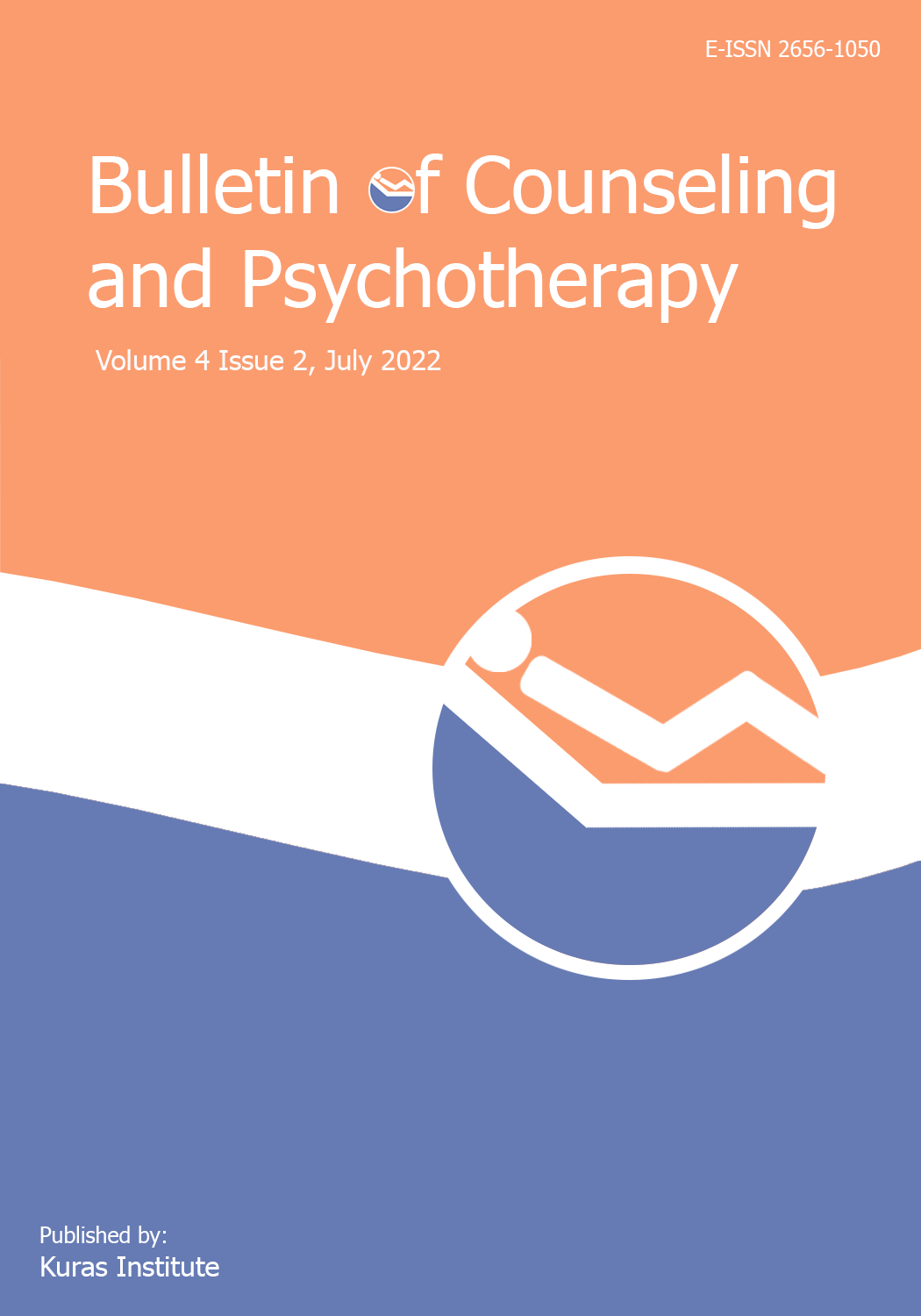Suasana Hatiku Bagaikan Roller Coaster: Studi Kasus Self-Disclosure di Media Sosial pada Orang dengan Bipolar Semasa Pandemi Covid-19
Abstract
This study aims to find out how the description of adolescents with bipolar disorder with drastic and extreme mood changes who carry out self-disclosure on social media during the pandemic. Subject selection using snowball sampling technique. Participants were 2 adolescents with bipolar disorder range aged 18-23 years, using social media for 2-3 hours in one time, and during a pandemic, the number of posts on social media increased, difficult to interact with other people directly and often share posts or writings or things that should not be shared on social media. Retrieval of data in this study using a qualitative approach, using in-depth online interviews, observation and collecting documentation as secondary research data. The results of this study indicate that the subjects experienced drastic changes in living life on social media during the pandemic, both subjects experienced fluctuating emotional changes and both also found ways to express themselves on social media during the pandemic, which states that people with bipolar disorder have lots of topics to talk about and daydream about something out of the ordinary. The main cause of bipolar disorder that often relapses is the pandemic period where people with bipolar disorder often feel relapse because they cannot meet their peers freely and even feel very lonely.
Downloads
References
Devito, J. A. (2013). The interpersonal communication book (13th ed.). New Jersey: Pearson Education. Google Scholar
Dwiputra, F. (2014). Hubungan Antara Motif Afektif Penggunaan Social-Media Twitter Dengan Keterbukaan Atas Informasi Diri Penggunanya. Skripsi. Universitas Brawijaya, Malang. Google Scholar
Fathonah, N. (2016). Perancangan Multimedia Interaktif Berupa E-Book Mengenai Penyakit Bipolar Disorder (Gangguan Bipolar) (Doctoral dissertation, Institut Seni Indonesia Yogyakarta). Google Scholar
Gitiyarko, V. (2021, Agustus 1). PSBB hingga PPKM, Kebijakan Pemerintah Menekan Laju Penularan Covid-19. Google Scholar
Grande, I., Michae, lBer, Boris, B., & Eduard, V. (2016). Bipolar disorder. The Lancet, 389. https://doi.org/https://doi.org/10.1016/S0140-6736(15)00241-X
Gunawan, R., Aulia, S., Supeno, H., Wijanarko, A., Uwiringiyimana, J. P., & Mahayana, D. (2021). Adiksi Media Sosial dan Gadget bagi Pengguna Internet di Indonesia. Techno-Socio Ekonomika, 14(1), 1-14. https://doi.org/10.32897/techno.2021.14.1.544
Indonesia, A. P. (2017). Hasil Survei Penetrasi dan Perilaku Pengguna Internet Indonesia 2017. Google Scholar
Jiwo, T. (2012). Depresi: Panduan bagi pasien, keluarga dan teman dekat. Purworejo: Pusat Pemulihan dan Pelatihan Bagi Penderita Gangguan Jiwa. Google Scholar
Mahendra, I. T. (2017). Peran media sosial instagram dalam pembentukan kepribadian remaja usia 12-17 tahun di Kelurahan Kebalen Kecamatan Babelan Kabupaten Bekasi (Bachelor's thesis, fitk). Google Scholar
Maramis, M. M., Karimah, A., Yulianti, E., Bessing, Y. F., & Wediodiningrat, R. (2017). Screening of Bipolar Disorders and Characteristics of Symptoms in Various Populations in Surabaya, Indonesia. Anima Indonesian Psychological Journal, 32(2), 90–98. https://doi.org/10.24123/aipj.v32i2.587.
Natalia, C., & Lestari, M. D. (2015). Hubungan antara kelekatan aman pada orang tua dengan kematangan emosi remaja akhir di Denpasar. Jurnal Psikologi Udayana, 2(1), 78-88. Google Scholar
National Institute of Mental Health. (2016). Bipolar Disorder. Google
Nugroho, Y. P., Waluyanto, H. D., & Zacky, A. (2015). Perancangan Novel Grafis Pengenalan dan Penanganan Bipolar Disorder. Jurnal DKV Adiwarna, 1(6), 19. Google Scholar
Panggabean, L. M., & Rona, D. (2015). Apakah aku bipolar? 100 tanya jawab dengan psikiater. Jakarta: PT Gramedia Pustaka Utama. Google Scholar
Purwati, P., Japar, M., & Qomariyah, L. (2022). Eksplorasi Dimensi Moralitas Remaja di Indonesia. Bulletin of Counseling and Psychotherapy, 4(2), 359-364. https://doi.org/10.51214/bocp.v4i2.215
Rusman, A. D. P., Umar, F., & Majid, M. (2021). Covid-19 dan psikososial masyarakat di masa pandemi. Penerbit NEM. Google Scholar
Santrock, J. W. (2013). Adolescence (Fifteenth). McGraw-Hill Education. Google Scholar
Wood, J. T. (2013). Komunikasi Teori dan Praktik (Komunikasi dalam kehidupan kita). Jakarta: Salemba Humanika. Google Scholar
World Health Organization (2017). Mental disorders fact sheets. World Health Organization. Diakses September 2022. World Health organization
Copyright (c) 2022 Fransiska Uly Simanjuntak, Rudangta Arianti

This work is licensed under a Creative Commons Attribution 4.0 International License.
Authors who publish with this journal agree to the following terms:
1) Authors retain copyright and grant the journal the right to first publication, with the work simultaneously licensed under the Creative Commons Attribution that allows the sharing of articles published with the acknowledgement of authorship and the initial publication in this magazine.
2) The authors are authorized to make additional contracts separately for distribution of the version of the work published in this journal (for example, publication in an institutional repository or as a chapter of the book), as long as there is recognition of authorship and initial publication in this journal.
3) Authors are authorized and encouraged to publish and distribute their work online (for example, in institutional repositories or on their personal pages) at any time before or during the editorial process, as it increases the impact and reference of the published work.







